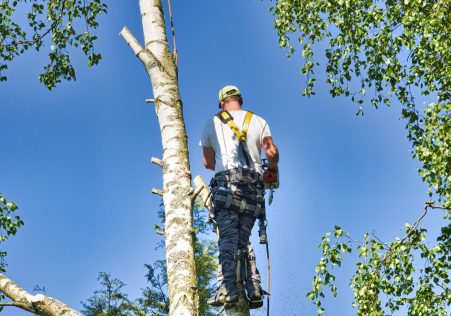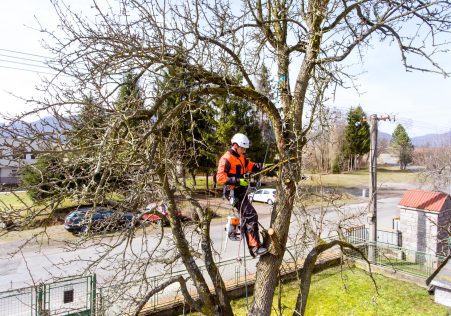The Surprisingly Longevity Of Tree Roots After Cutting

Tree removal is an essential task for many property owners, however, it’s not as easy as cutting the tree’s branches and leaving the root to decompose. Knowing the life span of tree roots is crucial in ensuring your removal is completed correctly and safely. In this article, we’ll look at the time that tree roots live after a tree has been cut down , and also answer many of the frequently-asked questions regarding this subject.
How long do tree roots last after cutting them down?
The life span of the tree’s roots after it has been cut down can vary greatly depending on the kind that the tree is, as well as the size of the roots, and the conditions in which they are located. In general, it’s possible to conclude that the tree’s roots will remain alive for a long time after a tree has been removed. The reason for this is that the roots are still capable of taking in water and nutrients from the soil, even after the tree has been removed.
Factors that Affect the Longevity of Tree Roots
There are a variety of aspects that impact the length of time that tree roots last after a tree is cut down. These include: Species of tree Certain species of trees possess roots which are much more resilient and longer-lasting than other species. For instance, oak tree roots have been known to live for many decades after the tree is taken down. Size of roots: The larger the roots of a tree, the longer they will likely last after the tree is cut down. The reason for this is that larger roots have a greater capacity to absorb water and nutrients in the soil. Environmental conditions: The soil kind, temperature, and the level of moisture in the area that the tree was removed will all impact the longevity of the roots. If the soil is dry and compacted the roots will decompose more rapidly. If the soil is moist and well-drained they will live longer.
What happens to tree Roots Following the cutting?
When a tree is cut down, the roots will slowly begin to decompose. This process may take a few years dependent on the variables that were discussed earlier. During this time the roots gradually release nutrients back into the soil, which could be beneficial for other plants that are in the vicinity. When the roots are fully decomposed, they will no longer be a danger to surrounding structures or landscapes.
FAQs:
Are tree roots able to grow again after cutting down?
No, tree roots cannot regrow after a tree has been cut down. Once the roots are removed, they slowly start to decay and no longer be capable of regrowing.
Will tree roots continue to grow after cutting down?
No, tree roots won’t remain growing after a tree has been cut down. But, they’ll remain alive for a number of years as they’re still capable of taking in nutrients and moisture in the soil.
Do tree roots continue to grow even after cutting down?
It is not true that tree roots aren’t going to continue spreading after a tree is taken down. After the tree is removed, the roots slowly begin to decay and cease to pose a threat to surrounding structures or landscapes.
Conclusion:
In conclusion, the duration of the tree’s roots after the tree is removed is a matter of debate depending on several factors. Knowing the duration that tree roots will live is crucial for ensuring that the removal process is carried out in a safe and secure manner. If you own trees that need to be removed, it’s always best to hire a professional Wollongong Tree Removal arborist to carry the task. Our highly-trained and experienced arborists are equipped with the right equipment and experience to safely and effectively remove trees, and to address any concerns regarding the durability that the tree’s roots. Call us today at 02 4203 3595 to schedule a consult and to learn more about our tree removal services in Wollongong. Don’t put your home at risk or putting yourself at risk trying to remove a tree on your own. Let the experts at Wollongong Tree Removal handle all of your tree removal needs.





















